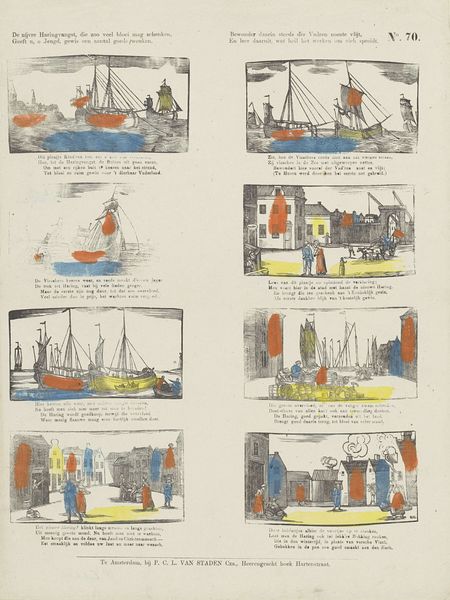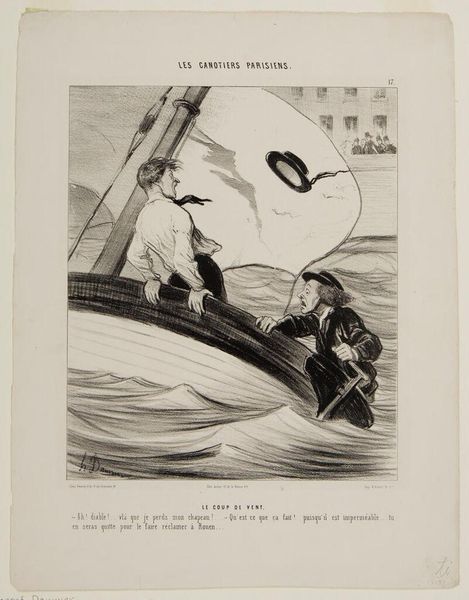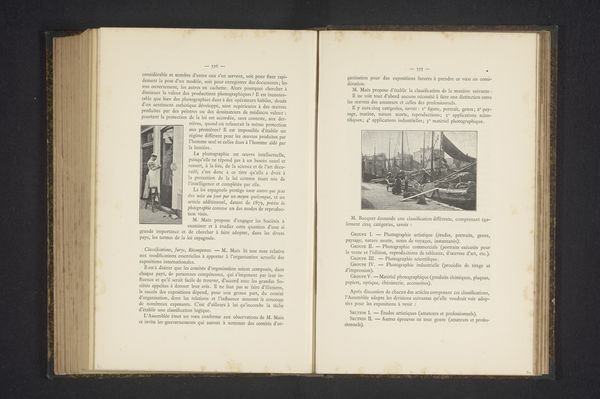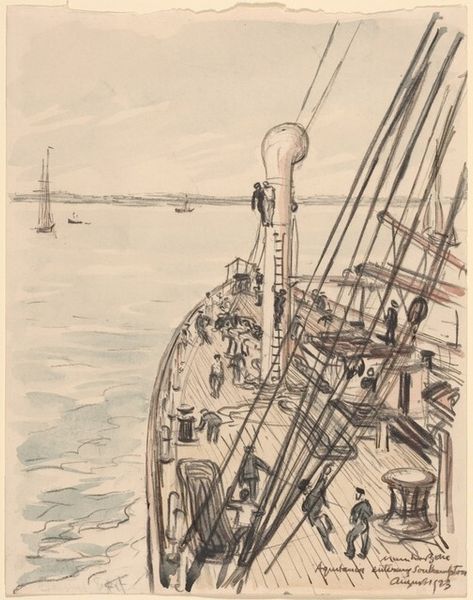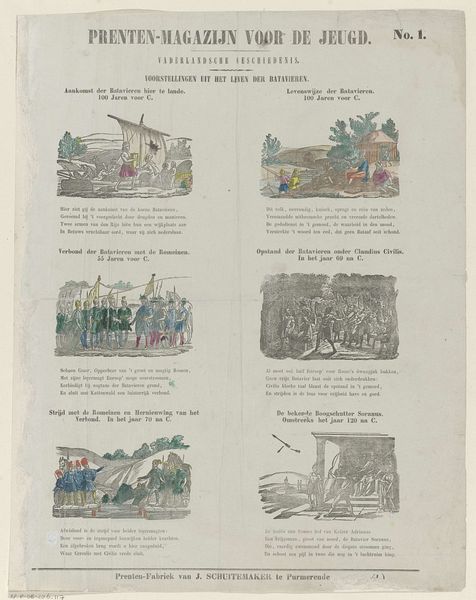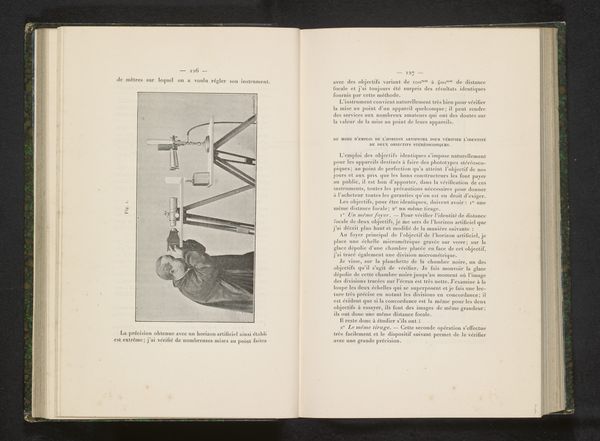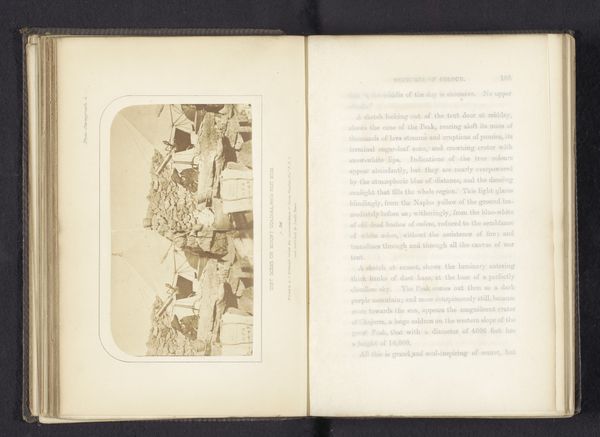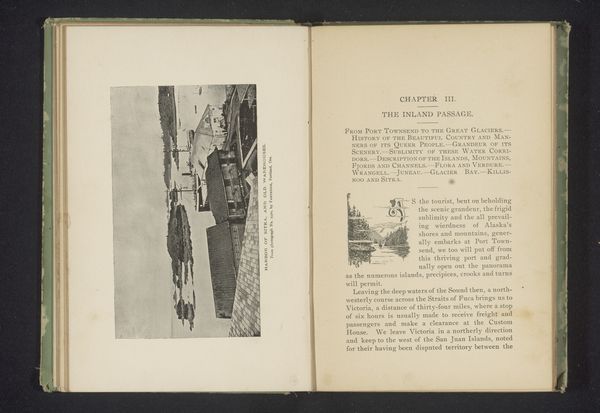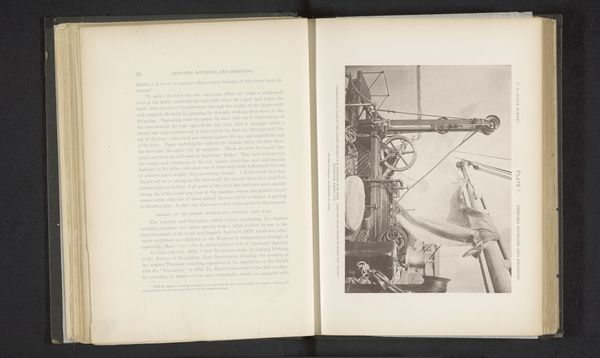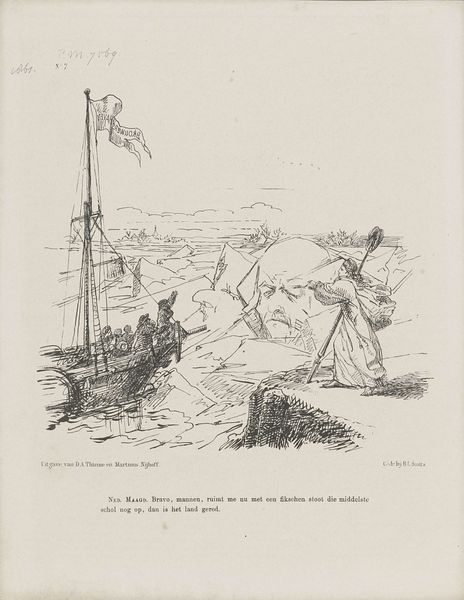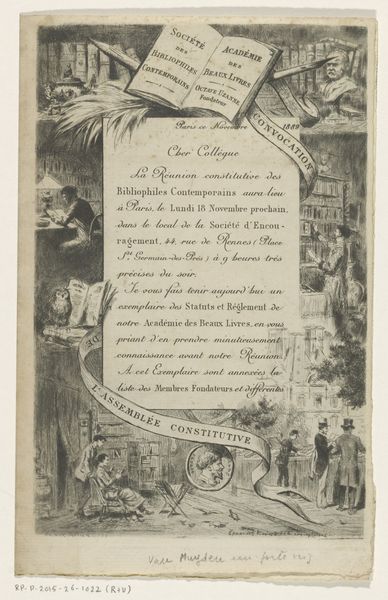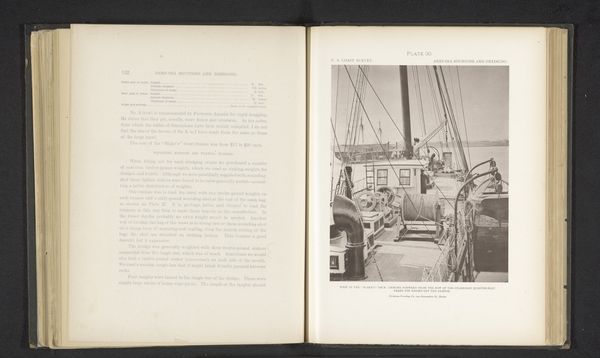
Art - Goût - Beauté, Feuillets de l' élégance féminine, Février 1926, No. 66, 6e Année, p. 13 1926
0:00
0:00
Dimensions: height 315 mm, width 240 mm
Copyright: Rijks Museum: Open Domain
Curator: Here at the Rijksmuseum, we have on display an image titled "Art - Goût - Beauté, Feuillets de l'élégance féminine, Février 1926, No. 66, 6e Année, p. 13." It comes to us from 1926, though the artist remains anonymous. Editor: It immediately strikes me with its playful Art Deco style. The scene is so breezy; the women on the deck have this elegant insouciance that's incredibly evocative. The rendering feels distinctly modern; it's almost illustrative. Curator: Illustrative is a good word, because that speaks to the magazine context and broader societal themes about women in this era. You get the feeling of modernity, as we shift towards a post-war society focused on luxury, leisure, and a redefinition of the feminine ideal through publications of this sort. What do you think of the positioning of the people compared to the steam boat? Editor: The graphic composition is wonderfully simple. We get very quick tonal gradations from the sea and figures; the eye goes directly to them against that strong dark steam boat. And that perspective! I can really sense a feeling of optimism and movement toward a bright horizon because of the implied motion of the vessel on its way. Curator: Absolutely. And to add another layer, publications like this played a role in democratizing art and design, bringing high-end aesthetics to a wider audience, contributing to a culture that was not exclusively limited to wealthy individuals or aristocracy. The magazine aimed to create and participate in a growing desire for a "feminine ideal". What do you see regarding that element within this picture? Editor: These stylish figures become symbols of their era by emphasizing bold geometries, bold colours, and refined, sinuous lines and silhouettes to create these modern looks and fashion styles. They look stylish, affluent and fashionable, reinforcing this image through not only the clothing, but in the context of the ship they're sailing on and the clothing choices. It's clearly for the wealthier social group of the era, but certainly one which may others aspire to. Curator: Precisely. The scene encapsulates this intersection of art, commerce, and the evolving role of women in the public sphere during the interwar period. The magazine really did construct and reflect desires that resonated with a burgeoning consumer culture. Editor: It's fascinating how the simplicity of the composition lends itself to these complex cultural readings, a small illustration in an old magazine that contains all this social history, right?
Comments
No comments
Be the first to comment and join the conversation on the ultimate creative platform.
